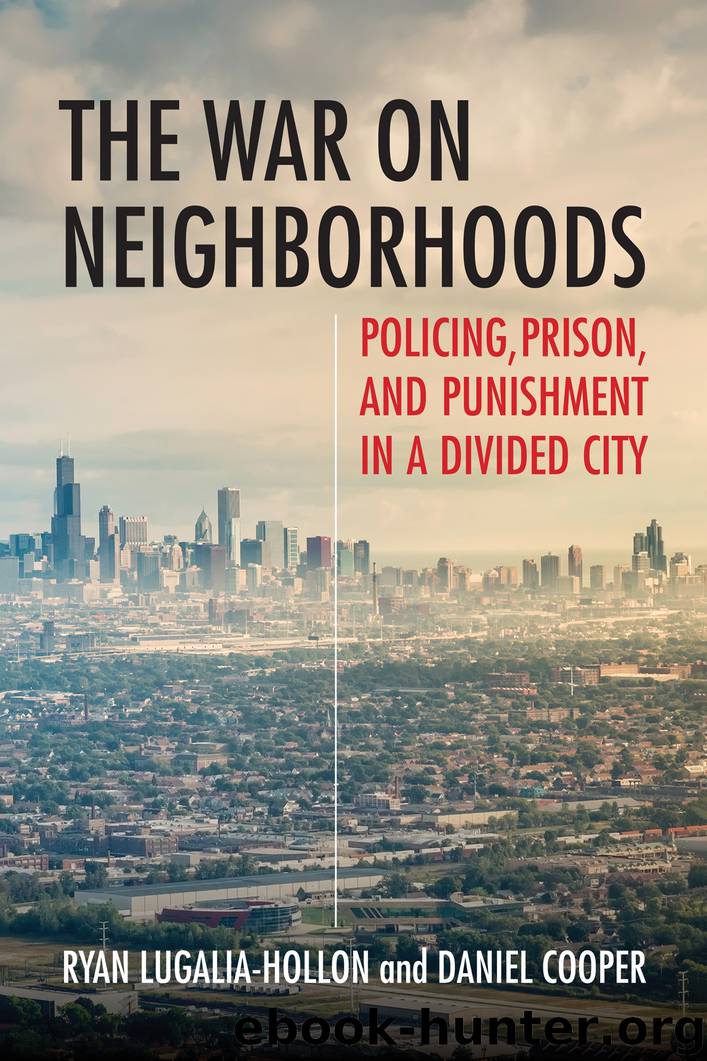The War on Neighborhoods by Ryan Lugalia-Hollon & Daniel Cooper

Author:Ryan Lugalia-Hollon & Daniel Cooper
Language: eng
Format: epub
Publisher: Beacon Press
CHANGING DESTINY
On a corner in Northwest Austin is Ruth Channing’s childcare center. A red awning wraps the north and east sides of the building. The center perfectly bridges the intersection where a commercial corridor and residential block meet, a uniform junction along Division Avenue. In the back, a large outdoor playground was built so that children had an outlet for their energy in the summer months. Walk down Waller Avenue, on the east side of the building, and you will see parked cars, trees, and fences in front of one- and two-story homes featuring brick, wood, or aluminum siding. Two lots on the block are empty, with futures still unfolding. As the seasons pass, these lots become home to fallen leaves, snow piles, blades of grass, and, eventually, wildflowers.
Ruth is a well-known leader in the Austin community. In addition to running her own early-learning center, she actively supports other early learning providers. As founder of the Austin Childcare Providers’ Network, Ruth works to connect parents to high-quality, licensed providers in the area. She also helps connect those providers to ongoing professional development opportunities.
Ruth knows that birth is not neutral. Without the right supports for children, geography may be the closest thing there is to destiny. Where people grow up influences almost everything about their path—the schools that are available, the food that is accessible, the level of safety outside their home, and the challenges and opportunities that shape their parents’ or caregivers’ lives. People’s place of birth often shapes how much adversity they will have to face and what resources they can call upon to face it. Opportunities and stress are both handed down within particular places, with major implications for life expectancy.21
Efforts like Ruth’s should never have to struggle for the investments needed to scale up to make a broader impact in a community like Austin. But to date, criminal justice reformers have made little room for building infrastructure for children and youth. Instead, reform efforts have been dominated by a reentry focus, which accepts the initial institutional channeling of millions of Americans into prisons. Successful reentry is essential, but it is limited by an inability to prevent the future generations of people from entering prison. To do so requires investing in and strengthening the institutions that can improve the quality of life of children and youth, as well as the resources that their family members need to thrive.
Much of the foundation for this strategy already exists. Over time, the social service sector has become one of the largest employers in places like Austin. As deindustrialization intensified on the West Side, several long-standing community organizations, founded in the 1970s and 1980s, have become integral parts of the neighborhood landscape, taking on greater importance and influence. Today, these groups—which often started as church efforts, informal networks, and secular organizing groups—are the primary providers of everything from senior housing to workforce development to energy assistance to reentry supports. Key organizations of influence include the Westside Health Authority, Bethel New Life, and the South Austin Community Coalition.
Download
This site does not store any files on its server. We only index and link to content provided by other sites. Please contact the content providers to delete copyright contents if any and email us, we'll remove relevant links or contents immediately.
| Anthropology | Archaeology |
| Philosophy | Politics & Government |
| Social Sciences | Sociology |
| Women's Studies |
Nudge - Improving Decisions about Health, Wealth, and Happiness by Thaler Sunstein(7260)
iGen by Jean M. Twenge(5166)
The Fire Next Time by James Baldwin(5025)
Adulting by Kelly Williams Brown(4240)
The Hacking of the American Mind by Robert H. Lustig(4093)
The Sports Rules Book by Human Kinetics(4081)
The Ethical Slut by Janet W. Hardy(4042)
Captivate by Vanessa Van Edwards(3732)
Mummy Knew by Lisa James(3523)
In a Sunburned Country by Bill Bryson(3375)
The Worm at the Core by Sheldon Solomon(3328)
Ants Among Elephants by Sujatha Gidla(3282)
Suicide: A Study in Sociology by Emile Durkheim(2908)
The Slow Fix: Solve Problems, Work Smarter, and Live Better In a World Addicted to Speed by Carl Honore(2843)
The 48 laws of power by Robert Greene & Joost Elffers(2818)
Humans of New York by Brandon Stanton(2694)
Handbook of Forensic Sociology and Psychology by Stephen J. Morewitz & Mark L. Goldstein(2606)
The Happy Hooker by Xaviera Hollander(2586)
The Tipping Point by Malcolm Gladwell(2565)
